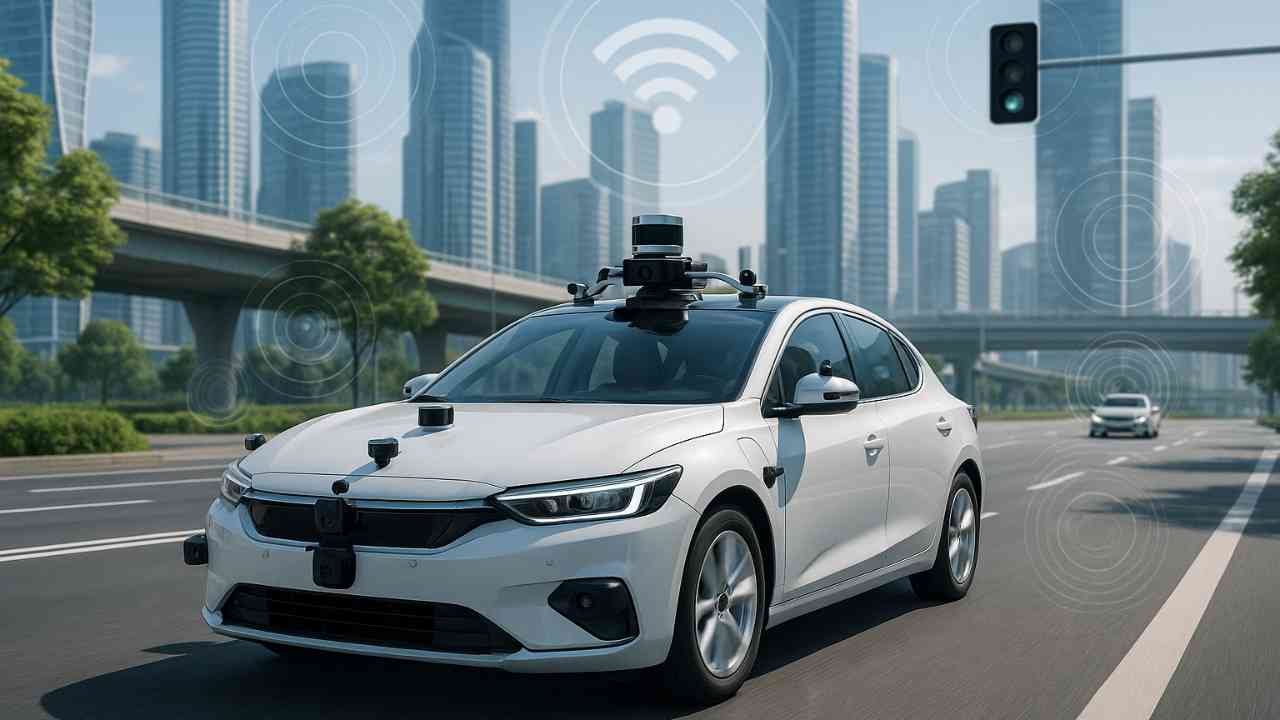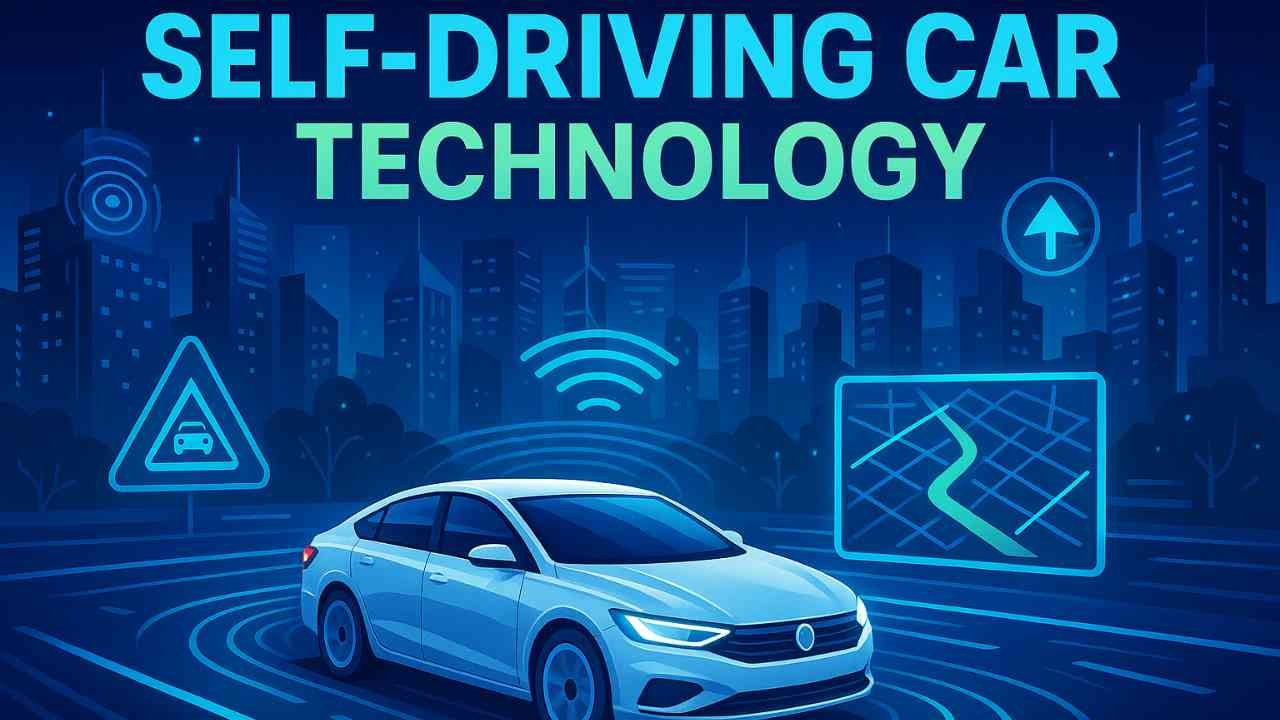Introduction
Self-driving car technology, or autonomous vehicles (AVs), is one of the most exciting and revolutionary advancements in the automotive industry. With the potential to change the way we travel, work, and live, autonomous vehicles are poised to become a mainstream reality. In this article, we’ll explore how self-driving cars work, the technology behind them, and what the future holds for this rapidly evolving field.
What is Self-Driving Car Technology?

Defining Autonomous Vehicles (AVs):
Self-driving car technology involves the use of artificial intelligence (AI), sensors, and cameras to navigate and control a vehicle without human intervention. An autonomous vehicle can perceive its surroundings, make decisions based on data, and move safely from point A to point B.
- Levels of Autonomy:
- Level 1: Driver assistance, such as cruise control or lane-keeping assistance.
- Level 2: Partial automation, where the vehicle can control speed and steering, but the driver must remain engaged.
- Level 3: Conditional automation, where the vehicle can drive itself in specific conditions, but the driver must intervene when needed.
- Level 4: High automation, where the vehicle can drive itself in most situations, but human intervention may be required in certain conditions.
- Level 5: Full automation, where the car can drive itself in all conditions without human intervention.
Key Technologies Behind Self-Driving Cars
Sensors and Cameras:
Self-driving cars rely heavily on various sensors to detect their environment. These include:
- LIDAR (Light Detection and Ranging): A laser-based technology that creates a 3D map of the surroundings.
- Radar: Used to detect objects at long distances, especially in poor weather conditions.
- Cameras: Provide visual data to identify road signs, pedestrians, other vehicles, and traffic signals.
- Ultrasonic Sensors: Used for close-range detection, like parking sensors or detecting obstacles.
Artificial Intelligence (AI) and Machine Learning:
The brain behind self-driving cars is AI, which allows the vehicle to make decisions based on real-time data from sensors and cameras. Machine learning algorithms help the car “learn” from experience and improve its performance over time.
Mapping and Navigation:
Autonomous vehicles rely on detailed maps and GPS for navigation. These maps provide information about roads, traffic patterns, and potential obstacles, helping the car navigate even in complex environments.
How Self-Driving Cars Work
The Driving Process:
Self-driving cars use a combination of sensors, cameras, and AI to understand their surroundings, plan a route, and make driving decisions. Here’s how it works:
- Perception: The car’s sensors scan the environment to detect other vehicles, pedestrians, traffic signals, and road conditions.
- Decision-Making: The AI processes the data from the sensors and makes decisions about speed, lane changes, and turns.
- Action: The car takes action by accelerating, braking, or steering based on the decisions made by the AI system.
Real-Time Data Processing:
Self-driving cars must process vast amounts of data in real time. This involves using powerful onboard computers and cloud-based systems to analyze data from sensors and make instantaneous driving decisions.
Benefits of Self-Driving Car Technology
Improved Safety:
One of the biggest advantages of self-driving cars is their potential to reduce accidents caused by human error. Autonomous vehicles are designed to follow traffic rules, react faster than humans, and avoid risky behaviors like distracted driving.
Increased Mobility:
Self-driving cars could provide greater mobility for individuals who are elderly, disabled, or otherwise unable to drive. AVs would allow them to travel independently, opening up new possibilities for daily activities.
Reduced Traffic Congestion:
With the ability to communicate with other vehicles and traffic infrastructure, self-driving cars can reduce traffic congestion. AVs could coordinate their movements to optimize traffic flow, reduce stop-and-go driving, and cut down on bottlenecks.
Fuel Efficiency:
Self-driving cars can be programmed to drive more efficiently, using algorithms that optimize acceleration, braking, and cruising speed. This could result in significant fuel savings and lower emissions.
Challenges of Self-Driving Car Technology
Regulatory and Legal Issues:
One of the biggest hurdles for self-driving cars is the lack of consistent regulations and laws. Governments must create clear guidelines for testing, certification, and road use, which could take time.
Public Trust:
Many people are skeptical about autonomous vehicles, particularly when it comes to safety. For AV technology to succeed, it will need to gain public trust and demonstrate its reliability in real-world situations.
Ethical Concerns:
Self-driving cars may face situations where ethical decisions need to be made, such as how to avoid a collision when it’s impossible to prevent an accident. These dilemmas raise important questions about programming moral decision-making into machines.
Technology Limitations:
While AV technology is advancing, it’s not yet perfect. Self-driving cars struggle in complex environments, such as heavy rain, fog, or areas with poorly maintained roads. The technology must improve to handle these challenges.
The Future of Self-Driving Cars
Advancements on the Horizon:
In the coming years, we can expect significant improvements in self-driving technology. Companies are working to refine AI algorithms, improve sensor technology, and develop new systems to make self-driving cars safer and more reliable.
The Role of Hybrid and Electric Vehicles:
Many self-driving cars are expected to be electric due to the environmental benefits and the integration with smart charging systems. The combination of self-driving and electric technologies will further enhance the sustainability of the automotive industry.
Integration with Smart Cities:
Self-driving cars will likely be integrated into smart cities, communicating with traffic systems, infrastructure, and other vehicles. This could lead to more efficient and synchronized transportation networks.
Conclusion
Self-driving car technology is poised to revolutionize the way we travel. While challenges remain, the potential benefits—including improved safety, efficiency, and mobility—make it clear that autonomous vehicles are the future of transportation. As the technology continues to evolve, we can expect to see more self-driving cars on the road in the near future.
